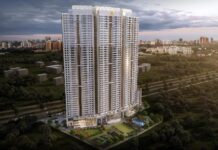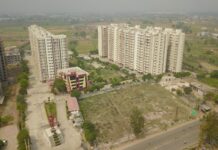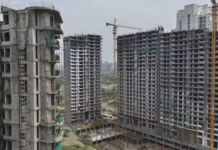New Delhi, November 18, 2024: As Indian cities grapple with rapid urbanization, evolving lifestyles, and increasing environmental concerns, urban planners are rethinking how to design spaces that are not only functional but also enhance the quality of life. Mixed-use developments, where residential, commercial, and recreational spaces coexist, have emerged as a forward-thinking solution. One key component gaining momentum in city planning within these developments is the integration of man-made beach lagoons—urban oases that redefine the way we think about nature in the city.
The Rise of Mixed-Use Developments
Traditionally, urban spaces were designed with distinct separations between where people live, work, and play. However, in India the growing demand for more sustainable, vibrant, and interconnected environments has led to the rise of mixed-use developments. These integrated spaces blend residential, commercial, and public amenities into a single, cohesive environment, promoting a sense of community and reducing the need for long commutes.
Mixed-use developments have the power to reshape the way we interact with urban spaces, offering convenience, connectivity, and a greater sense of belonging. They address several challenges modern cities face, including limited land availability, the need for green and recreational spaces, and the drive for more energy-efficient living.
The Role of Urban Man-Made Beach Lagoons in Mixed-Use Developments
One of the most exciting trends in city planning today is the inclusion of urban man-made beach lagoons. These lagoons offer an unparalleled opportunity to merge nature and leisure with urban living. With advanced water filtration and management technologies, these beach lagoons provide a sustainable solution for incorporating water-based recreational amenities in the heart of cities.
Urban beach lagoons introduced in India by Champion infratech with crystal lagoon technology serve as a central feature in mixed-use developments, elevating the value of surrounding real estate while providing an attractive lifestyle component for residents, businesses, and tourists alike. The introduction of an artificial beach in a city redefines how people experience urban spaces, offering relaxation, sports, and leisure activities in a natural setting, without needing to travel to coastal regions.
The Economic and Social Benefits of Beach Lagoons
Urban beach lagoons bring a host of economic and social benefits to mixed-use developments. From an economic perspective, these lagoons significantly increase the value of surrounding properties. Whether it’s residential apartments, hotels, or commercial buildings, proximity to a man-made lagoon enhances desirability, leading to higher occupancy rates and greater return on investment.
For instance, real estate projects featuring urban beach lagoons often see a 30-50% increase in property values compared to similar developments without a lagoon. This uplift is not limited to residential properties—retail and hospitality venues also experience a surge in foot traffic and revenue due to the lagoon’s ability to attract visitors.
Socially, these lagoons act as a focal point for community interaction, offering public spaces that foster a sense of belonging and connectivity. Unlike traditional parks or plazas, lagoons provide a unique recreational outlet, supporting activities such as swimming, paddleboarding, kayaking, and beach sports, which appeal to a diverse demographic. These spaces encourage outdoor activities, promote health and well-being, and create an environment where people can socialize and relax in the middle of an otherwise bustling city.
Sustainability Considerations
One of the main concerns when introducing water-based features into urban settings is sustainability. However, modern technology has made it possible for beach lagoons to operate with minimal environmental impact. These lagoons use advanced filtration systems that significantly reduce water consumption, ensuring the lagoons remain clean without the need for constant water replacement. Additionally, some beach lagoons incorporate rainwater harvesting and aquifer recharging systems, contributing to the sustainable management of city water resources.
Furthermore, the energy-efficient technologies behind these lagoons allow them to maintain optimal water quality with low energy input. This makes them a more environmentally friendly alternative to traditional swimming pools or natural bodies of water in urban environments.
Urban Planning and Lagoon Integration
Integrating urban beach lagoons into mixed-use developments requires careful consideration during the city planning process. Planners and developers must account for the lagoon’s placement, ensuring it enhances the flow of the development and complements the surrounding infrastructure. Lagoon-based developments typically prioritize pedestrian-friendly designs, with walking paths, open spaces, and public seating areas that allow residents and visitors to enjoy the waterfront ambiance.
Mixed-use developments with lagoons also promote the concept of a “15-minute city,” where essential services and recreational spaces are accessible within a short walking or cycling distance. This not only reduces the dependency on cars but also encourages a more sustainable and healthier urban lifestyle.
From a design perspective, the visual appeal of a man-made beach lagoon can significantly impact the aesthetic value of a city. These water features can be designed to mimic natural beachfronts, complete with white sand, palm trees, and crystal-clear waters, transforming a typical urban environment into a vibrant, nature-inspired space.
Future Prospects
As more cities recognize the importance of creating livable, sustainable, and multifunctional urban spaces, the role of mixed-use developments will continue to grow. Man-made beach lagoons, as part of this equation, offer an innovative solution to many of the challenges urban planners face today. They provide the benefits of nature without the limitations of geography, making them an attractive option for landlocked cities looking to enhance their residents’ quality of life.
Incorporating beach lagoons into city planning not only transforms the physical landscape but also shapes the social fabric of communities. These spaces create a unique blend of urban convenience and natural beauty, offering a blueprint for the future of city living.
Urban beach lagoons are more than just a trend now in India —they represent a shift towards a more integrated, sustainable approach to urban development. By combining the best of nature and city life, these lagoons enhance the functionality and appeal of mixed-use developments, making them a cornerstone of future city planning. As cities continue to evolve, beach lagoons will undoubtedly play a pivotal role in shaping more vibrant, sustainable, and connected urban environments.
Corporate Comm India (CCI Newswire)




















